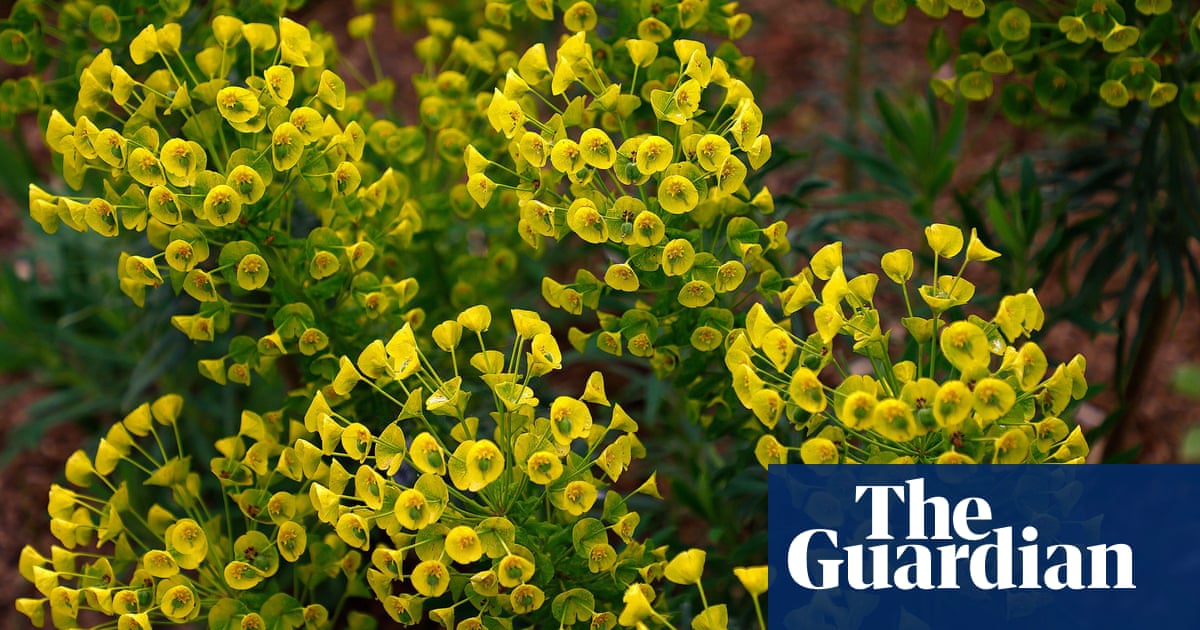I’m fortunate enough to work from a posh outhouse in the back garden. Known as The Hut, it could grandly be called A Studio, but is, in reality, a large shed with better-than-average insulation, some bookshelves and a fan heater. I get to have a potter in the garden as part of the “commute”, but recent weather has meant my current options to get to work are: gingerly cross the patchy lawn (which I intend to reseed next week, before we go away, so it can germinate in peace) or take the less-direct gravel path. The latter would be the sensible option, except that my euphorbia is absolutely rocketing away, and offers a sort of thigh-high wash of its own.
You’d probably recognise euphorbias even if you didn’t know what they were; in the final, bright days of winter they are a happy, often-neon beacon of hope and promise. My Euphorbia characias subsp. wulfenii are currently exploding out of an old agricultural water trough that I tried, and failed, to turn into a small pond (I never could stop the leaks), but they previously lived in the gravel garden, until they grew too big for their boots. If I was trying to contain them, I failed: they now rise resplendently to chest height, frequently threatening to engulf the toddler whole (crucially, never when the stems are cut – the sap can be quite nasty on bare skin and in eyes).
This is why they have a bit of a reputation for being a horticultural thug, or taking up space over other plants. In theory, E. wulfenii prefer well-drained soil and full sun, but mine are in a pretty damp, cramped container in a shady corner next to the house that only gets evening sun, and it evidently hasn’t done them much harm. For small and container-based gardens, they really pack a punch for an easily bought plant, those massive lime-green flower heads sparking interest, shape and texture in a garden on the verge of spring. E. wulfenii is also drought-tolerant, making it a good option for pots that tend to dry out more quickly later in the year, and evergreen.
after newsletter promotion
Other options are E. amygdaloides var robbiae, which I’ve grown on balconies over the past decade – both sun-drenched and woodland – and will spread contentedly in the ground, rarely growing more than half a metre and flowering a little later in the year. E. palustris, meanwhile, flowers in early summer but boasts auburn foliage with the autumn.
If lime green sounds a bit Brat summer, be reassured – it works. My iPhone notes app reminded me to “order more euphorbias” five years ago, along with alliums (purple, I suspect). The latter didn’t work very well in my soil, but the euphorbias have stuck around. Plus, the colour tends to fade as everything else ramps up, leaving a pleasingly odd and architectural silhouette long into the dwindling days.









